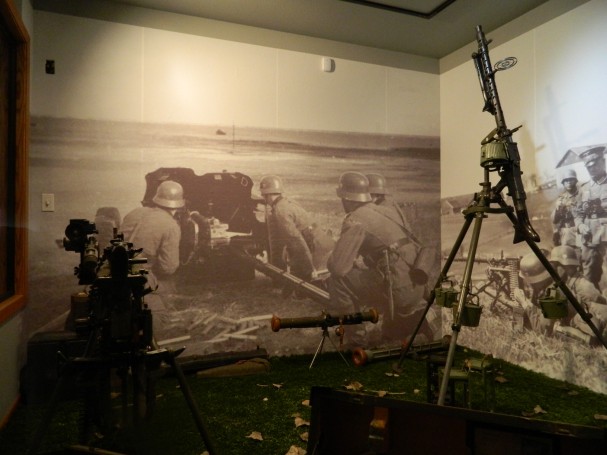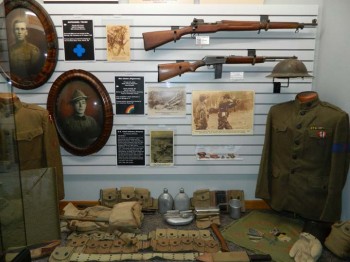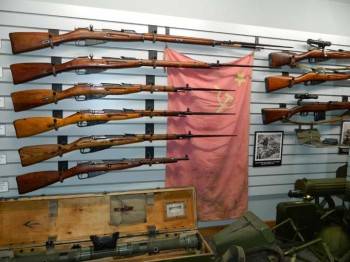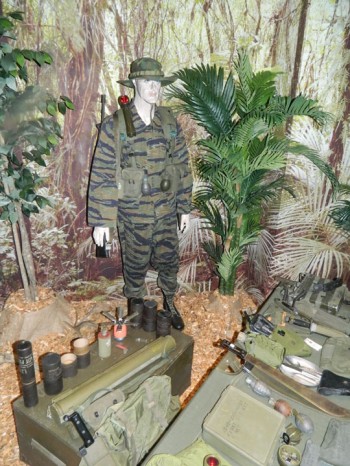 The Armed Forces Military Display and Gifts museum in Wasta, S.D., is more than a museum; it is a re-creation of the environments and elements in which America’s wars were fought.
The Armed Forces Military Display and Gifts museum in Wasta, S.D., is more than a museum; it is a re-creation of the environments and elements in which America’s wars were fought.
The museum’s curator, Tom Rancour, goes to great lengths to infuse each display with as much reality as possible. The various military equipment and arms displayed at the museum – from the personal items soldiers carried in the field to airplanes and tanks – represent the culmination of years of painstaking collection by Rancour and items generously donated by veterans and their families.
In order to better set the scene for the museum’s recent displays that incorporate the environment in which the original equipment would be typically found, Rancour has been using Photo Tex (EX) – Aqueous Printers from LexJet for photographic wall murals.
The first wall mural depicted German field equipment used in World War II, a project we covered a couple of months ago at the LexJet Blog.
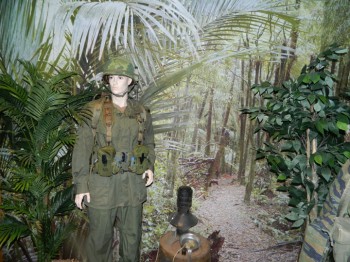 The most recent display features equipment and uniforms typically used in the jungles of Vietnam. The wall mural printed on Photo Tex creates the jungle surroundings, as well as artificial palm trees, bamboo and a Ficus tree Rancour bought at Michael’s craft store.
The most recent display features equipment and uniforms typically used in the jungles of Vietnam. The wall mural printed on Photo Tex creates the jungle surroundings, as well as artificial palm trees, bamboo and a Ficus tree Rancour bought at Michael’s craft store.
“I found two jungle pictures at a stock photography site and merged them together in Photoshop so you couldn’t see where they merged. I enlarged it to eight feet to cover the corner room where the display is located,” explains Rancour. “The Photo Tex EX was easy to apply, including the outside corners, in one piece. I made sure the corners were nice and plumb and square, because if they weren’t it would be difficult to apply it without cutting the material to size. On the outside corners I peeled the material horizontally rather than vertically, which made it easier for that part of the application.”
Rancour applied the Photo Tex to five different wall sections in the corner room in two panels. The total size of the mural is about 8′ x 26′. Rancour adds that instead of taking a security sensor off of the wall, he cut around it and applied that piece to the sensor’s cover. “You don’t notice it; it blends right in,” he says.
“I used the EX version of Photo Tex because of the wall surface, which is a lightly textured eggshell. I didn’t have any problems when I tested the regular Photo Tex on it, but to be safe I went to the EX because it was a minimal extra cost to do it,” he adds.
Rancour’s next project will be a British military desert scene from World War II for which he’s currently looking for appropriate photography to use for the surrounding wall mural.

